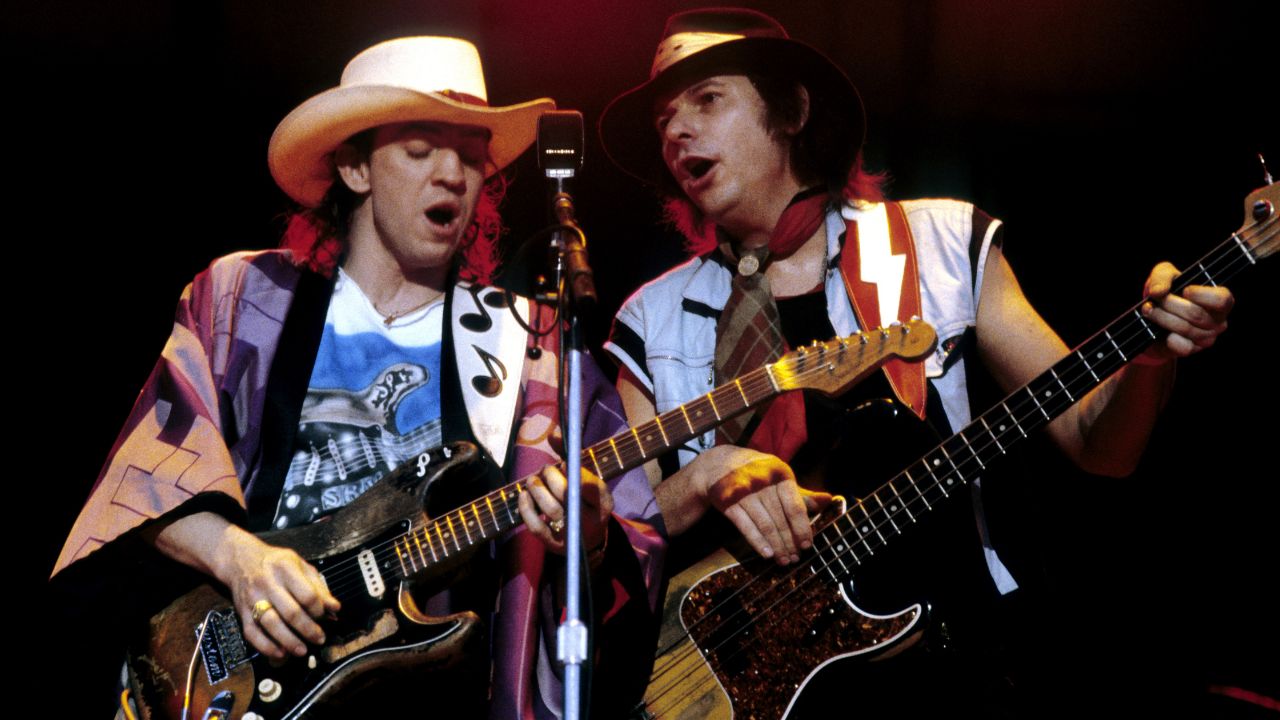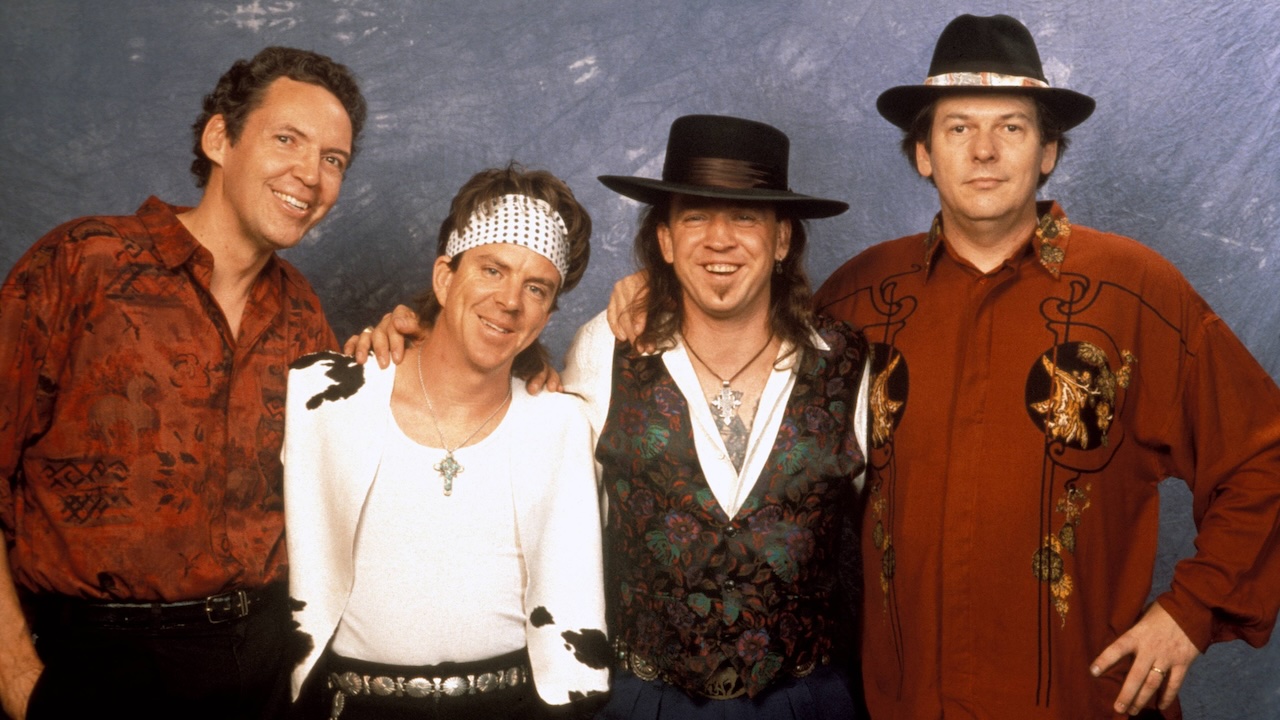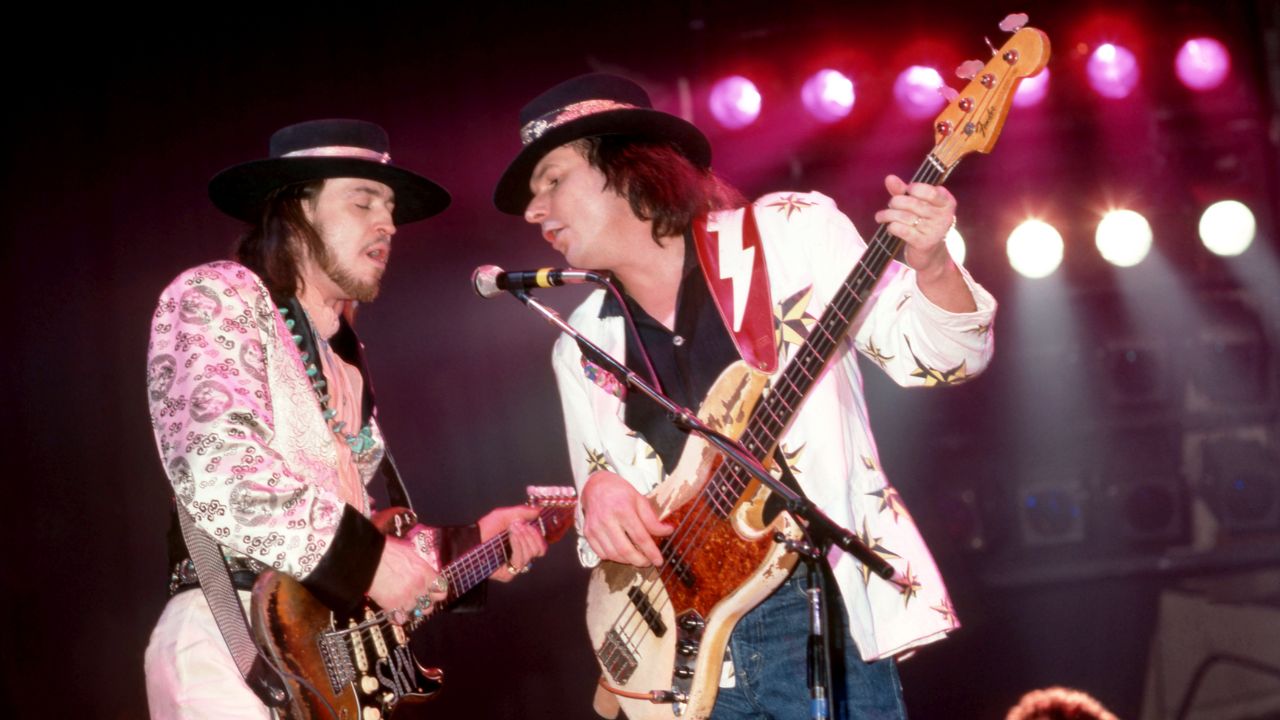“Everything in Double Trouble was a spontaneous thing – there was no plan”: How bassist Tommy Shannon stumbled onto the funky foundation for one of Stevie Ray Vaughan’s biggest radio hits
What started with a rehearsal room groove ended up an SRV classic. We dissect the anatomy of bassline that walks the line (you might even call it a Tightrope) between blues, rock and funk

The indelible image of legendary guitarist Stevie Ray Vaughan is him standing at the front of the stage, growling into the microphone, and doing things to the guitar no one will ever completely duplicate as he worked himself into a sweaty mess of revitalised blues.
But even for a once-in-a-lifetime artist like Stevie Ray, there was still a rhythm section grounding him, pushing him, and taking him to new places. For Vaughan, that rhythm section was Tommy Shannon and drummer Chris Layton, and they stuck together from 1980 all the way until Vaughan's untimely death in 1990.
And on their fourth studio album, In Step, Stevie Ray Vaughan & Double Trouble cooked up a combination of blues, rock, and funk on a tune called Tightrope that served as the record's greasiest groove.
Vaughan and Shannon's rough lifestyle during the 1980s is well documented, and In Step was the first album they did clean. The results spoke for themselves: the songwriting was more focused, and new ideas were being explored.
It was while they were working on what would become their highest-charting single, Crossfire, that they stumbled onto the foundation for Tightrope.
“It was just a funky groove,” Shannon told Bass Player back in September 2008. “Chris and I were jamming it in rehearsals, just messing around. Stevie was actually singing the lyrics to Crossfire while we were playing it, and he liked it.”

“Everything in that band was a spontaneous thing – there was no plan to do that. A lot of things Chris and I played were just us messing around.”
All the latest guitar news, interviews, lessons, reviews, deals and more, direct to your inbox!
Stevie was actually singing the lyrics to Crossfire while we were playing it, and he liked it
After a quick introductory motif, Shannon establishes the main groove of the song with two fat eighth-notes on the root. He then waits for the last 16th-note of beat two to play a very short open E (or even a muted E, depending on interpretation) and set up the beat three lick of B-A-B (though Stevie Ray's band always tuned down a half-step to Eb, they were always thinking E on their instruments).
Finally, he slides in another tight open E on the second 16th-note of beat four before using A# as a passing tone to return to the root.
All of this happens in 1st position, and is played tightly, like a funk tune. The same groove returns for a double verse at 00:38, and anchors the whole song.
At 01:00 we reach the first chorus, where Shannon slides up the neck, moving between 5th and 7th position as he creates a slightly different motif under the alternating E7 and B7 chords.
The band plays this section more loosely; Shannon gets in touch with his inner James Jamerson, using a variety of 16th-note syncopations to swing the tune even harder.
He tends to improvise a little more over the E7 (check out the first bar of the chorus for the two most common variations), but he sticks with the pattern over the root B7 chord. All the while, he's employing that open E as a way to mute or half-mute the offbeat 16th-notes for deeper levels of groove.

Shannon keeps this up in the guitar solo, which lasts for two blues forms. The first time around, he plays the verse groove (albeit in a different position) throughout the changing chords, leading to some nifty climbs and funky falls.
The second time (at 01:49), he uses the root pattern from the chorus, originally established at 01:03, as a motif for the remainder of the solo, and he and Layton tear it up for another 11 bars before bringing it back to the intro motif.
Eventually, after another verse and chorus, Shannon throws in the kitchen sink at 03:10, using busier lines, octaves, new syncopations, and climbs up and down the neck to elevate the groove to a new level of intensity as it starts to fade.
Everything in Tightrope is swinging: the drums, the rhythm guitar, the Hammond organ, and certainly the bassline. It's not a hard swing; it's more of a medium, laid-back groove that Shannon uses to get the 16th-notes really bouncing.
- In Step is out now via Legacy Recordings.
You must confirm your public display name before commenting
Please logout and then login again, you will then be prompted to enter your display name.

